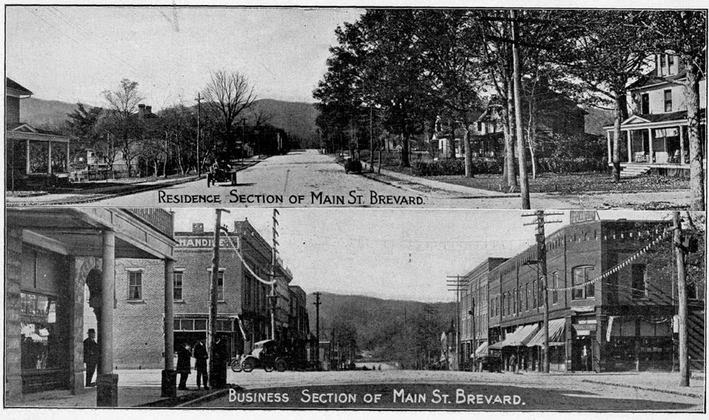 |
| Broad Valley Institute, Penrose |
The first schools in Transylvania County were private subscription schools. Parents paid a fee for their children to attend. The tuition could be cash or produce from farms or gardens. These schools were often in shared facilities, which were also used for church services or as meeting houses.
In 1824 the Davidson River Academy, a subscription school in what was Buncombe County at that time, opened on the North side of the Davidson River. It offered a mid-level education in the areas of classics and elementary reading, writing and algebra. This school operated until at least 1896.
Branson's Business Directories for 1867 and 1869 list three schools in Transylvania County. They were Corinth Academy, Cherryfield; Davidson River Academy, Davidson's River; and French Broad Academy, Brevard. The 1889 and 1896 directories list four academies located in Brevard, Davidson's River, Zachary's (Calvert) and Grange (Little River).
About 1880 the Broad Valley Institute, a church affiliated school in the Penrose community, built a large church auditorium and school together. Beginning in 1902 it was under the control of the North Carolina Baptists. The preachers also served as teachers. It provided education through one year of a regular college course and was in operation until about 1910. It was also referred to as Sylvan Valley Institute.
In 1895 Fitch and Sarah Taylor opened a school for young girls in their home. This became known as the Epworth School. The first year it was in the Henning House on West Main Street and had only three students.
As the school grew they moved to the Red House on Probart Street. By October 1899 the enrollment was 79 students and there were three teachers. After completing basic education students could continue at Brevard Institute.
Begun around 1900 by the Taylors, Brevard Institute was under the control of the Methodist Church by 1903. Mr. E.E. Bishop was principal in 1904, followed by Carl Trowbridge from 1907-1933. The school closed in 1933.
 |
| Methodist School, Rosman |
In Rosman there was also an early subscription school. The Old Zion Baptist Church operated a school well before 1900, maybe as early as the late 1850s. When the school outgrew that building, they moved to the Presbyterian Church near the current high school. This church and school later became affiliated with the Methodist Church.
Photographs and information for this column are provided by the Rowell Bosse North Carolina Room, Transylvania County Library. Visit the N.C. Room during regular library hours (Monday-Friday) to learn more about our history and see additional photographs. For more information, comments or suggestions, contact Marcy at marcy.thompson@transylvaniacounty.org or (828) 884-3151 ext. 242.




